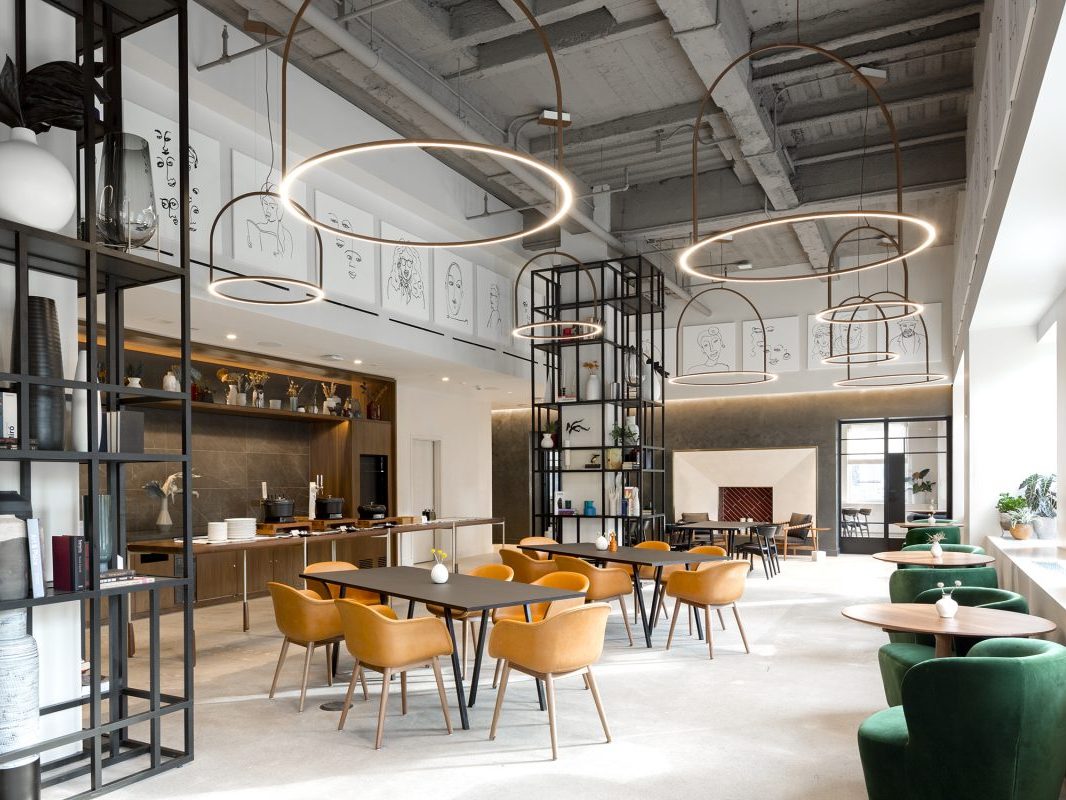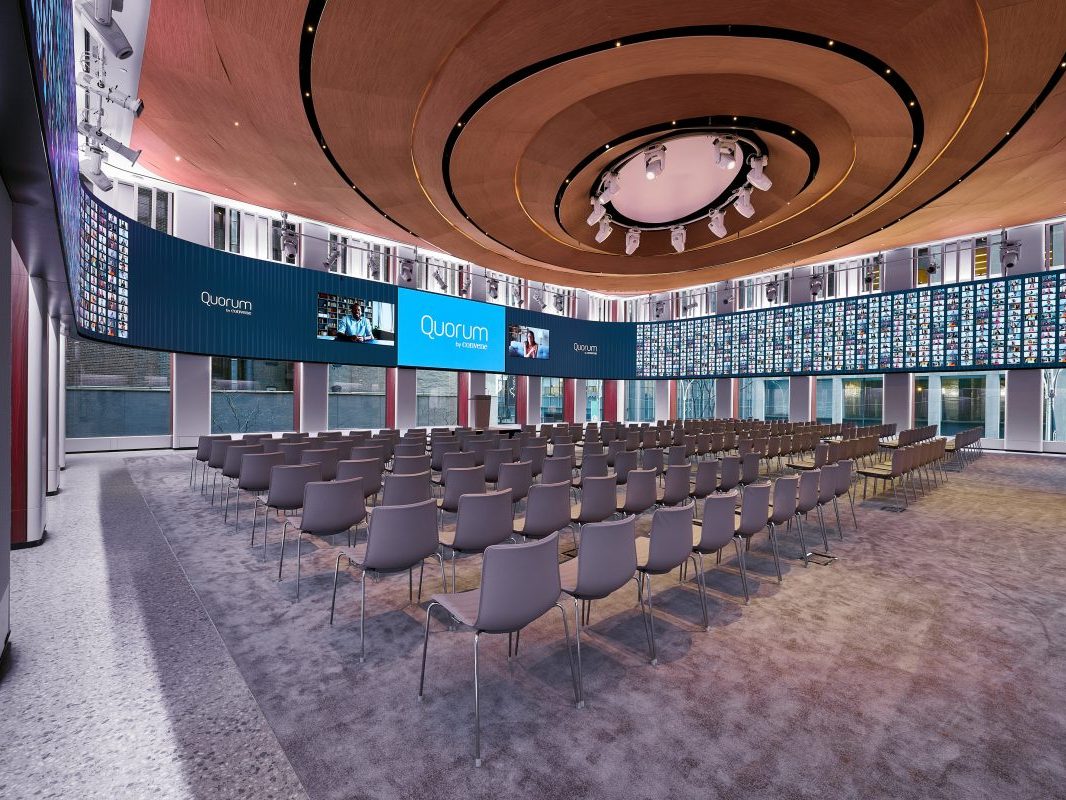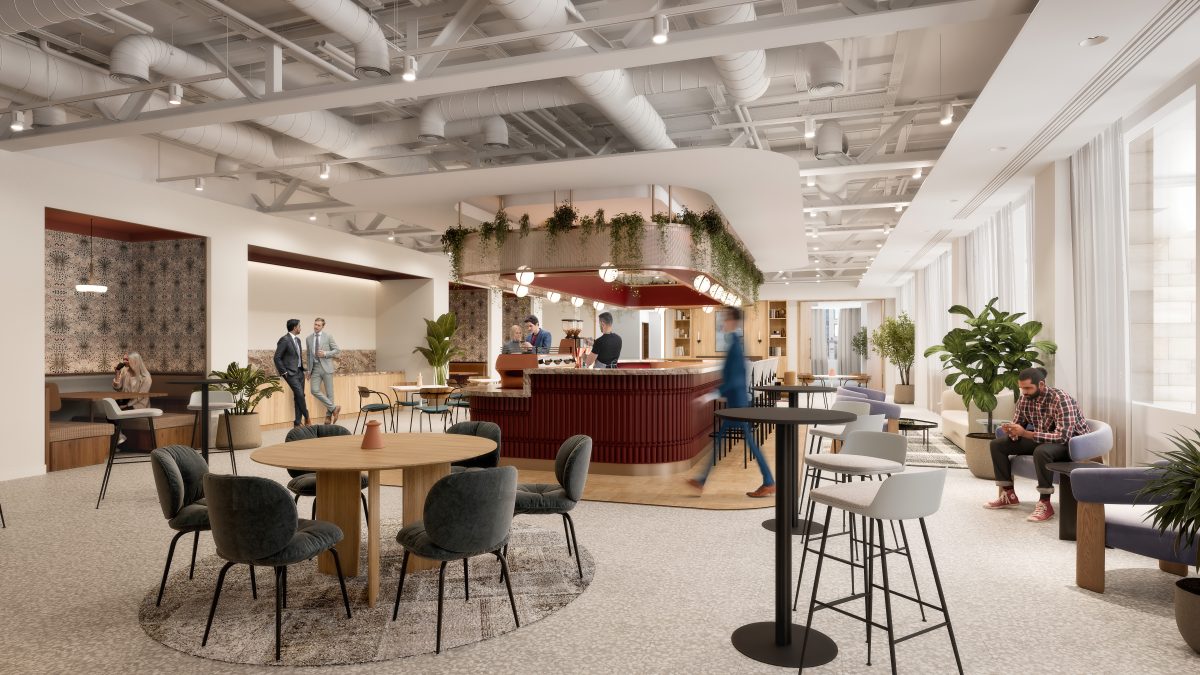How Flight-to-Quality Is Leading the Flex Office Evolution
Experience-driven workplace destinations are outperforming the rest, says Convene CEO Ryan Simonetti.

The flight-to-quality trend that has been driving the office sector for the past several years is also fueling growth in the flex office space.
With an increased emphasis on quality over quantity, workspace providers have been experimenting with different new elements to attract tenants, including the addition of community-building events, elevated design and wellness amenities. And the hospitality industry serves as a source of inspiration for many of these enhancements, according to Ryan Simonetti, CEO & co-founder of Convene.
Focusing on designing, building and operating flex and meeting spaces in 39 locations across nine cities in the U.S. and the UK, Convene’s approach is hospitality-driven. What does that mean exactly? We asked Simonetti to expand on why tenants have come to expect the office to be more of an experience than simply a space to get work done, and how landlords are adapting to the flight-to-quality trend.
READ ALSO: What Office Users Want in Flex Space Now
Convene has more than 44 years of combined experience across its portfolio of brands. How much has the flex industry evolved over the years and what contributed to changes in the space?
Simonetti: While we expanded our product offerings in 2018 to include flexible office solutions, our core business is and always has been creating premium meeting and event venues. Across our global portfolio of brands, which includes etc.venues, the biggest shift we’ve witnessed in the industry coming out of COVID-19 is the flight-to-quality and flight-to-experience that is forcing companies and landlords to rethink the office and the purpose it serves.
In a hybrid-first working world, leaving the house to meet with teams and colleagues in person must feel ‘worth it’—and so we’re seeing high-quality, design-led, experience-driven workplace destinations outperform the rest of the industry. Landlords are also investing heavily in amenitizing their buildings and partnering with flex operators to accommodate the new way of working, offering more meeting rooms, collaboration spaces and hospitality services.
What are the top trends you’re noticing today in the flex industry sector, particularly in terms of workspace design and amenities?

Simonetti: Today’s top trends in the industry are all about driving return-to-office and creating experiential workplace destinations.
Half the space, twice the experience—while companies are leaning into flex as they ‘right-size’ their real estate footprint, they’re still prioritizing an elevated workplace experience that makes teams want to come to the office. A well-designed space is no longer enough and flex providers need to offer quality hospitality services.
Convene’s WorkPlace is at 100 percent occupancy in most locations because of its concierge-style service, meeting and event spaces, executive chef-prepared dining options, wellness offerings, member events and programming. The workplace of the future is a meeting space.
In a hybrid work world, companies still need a place to bring teams, colleagues and clients together to connect and collaborate in person. In the last year, we have seen a 15 percent increase in demand for meetings across our global portfolio, with demand in 2024 pacing significantly ahead of last year. Beyond adding flex office spaces, landlords are tapping flexible office providers to design and manage high-quality meeting and conferencing centers within the building itself as an amenity offering for all tenants, like Venue 42 by Convene at 5 Times Square in New York City.
As flex office becomes a more permanent workplace solution for companies, they want to put their stamp and their brand on the space, so it feels like ‘home.’ It is no longer enough to simply put the company logo on the door. We’re now seeing an increase in requests for custom designs within our private WorkSuites, including branded wall decals, accent furniture and other personalization opportunities to make the space feel like their own.
READ ALSO: Where Branding, Franchising Meet in Coworking
How are you staying competitive in the rapidly evolving flex market?
Simonetti: I’ve always believed that the future of the flex industry will look a lot like the hotel industry, with multiple brands that can serve the various needs and budgets of clients sitting under the umbrella of a single global parent company.
Convene started making inroads in this direction last year with the acquisition of etc.venues and the accelerated growth of our ‘by Convene’ venues via landlord partnerships. We recently announced the further segmentation of our portfolio, positioning Convene as a premium lifestyle brand for larger, highly experiential events and our workplace offering, and etc.venues as an accessible lifestyle brand ideal for small meetings and corporate training. We believe this strategy will allow us to capture a much larger market share and are eager to continue down this path through both organic and M&A growth opportunities.
What’s the typical layout of your coworking spaces? How exactly does the layout promote productivity and collaboration among users?

Simonetti: At the heart of any Convene location are our food and beverage spaces, including cafes and unlimited snack stations. Our properties range in size from 20,000 square feet to as large as 100,000 square feet for flagship Convene locations that include our WorkPlace product and a full suite of amenity solutions. Given our core business is meetings and events, every single one of our locations has a diverse offering of meeting and event spaces, both big and small, for our clients to meet, collaborate and host a diverse range of corporate events.
Several Convene locations are built to support large, experiential meetings, conferences and exhibitions, and feature grand halls for mainstage sessions, breakout rooms, and expansive gallery spaces that allow for networking opportunities. A great example of this is Convene Sancroft, St. Paul’s, set to open in April, which will introduce the largest single above-ground meeting room in the City of London, able to accommodate up to 900 attendees.
Expand on the hospitality-centric amenities across your locations, which often means incorporating wellness elements to support users’ health and well-being.
Simonetti: One of the most notable hospitality offerings at Convene is our in-house culinary team. Each location has a full kitchen staff led by an executive chef who is focused on creating nourishing and energizing food with premium, locally sourced ingredients to help our clients power through their workday.
To me, hospitality also means providing an above-and-beyond human-to-human service experience, which is why we provide our clients with a dedicated single point of contact to help them navigate any needs they may have, ensuring a seamless experience. Our on-site team members are also trained in hospitality best practices, practice empathy and are encouraged to be as anticipatory as possible when it comes to making sure our clients and their guests have a five-star experience.
On the wellness side, we operate onsite wellness facilities and have a long-standing partnership with primary care practice Eden Health, offering complimentary access to all members of our flexible workplace product.
READ ALSO: Beyond Aesthetics—Prioritizing Well-Being in Workplace Design
How do you expect the role of meeting and event space within coworking flex spaces to evolve?
Simonetti: Meetings and events are emerging as a core element of return-to-office strategies for a lot of companies. As a result, we’re seeing more and more landlords interested in adding large meeting and event venues to their office buildings as a means of attracting and retaining tenants. With flight-to-experience taking hold, Convene has become the partner of choice for Class A landlords and developers looking to bring their buildings to life by creating hospitality-infused amenity experiences.
How do you identify suitable locations to add to your portfolio?
Simonetti: We have been very intentional and methodical in our growth, selecting the right cities, locations, landlord partners and even floorplate sizes that meet the needs and demands of our clients. For example, San Francisco was our top-requested market from existing Convene clients for almost five years before we finally launched Convene 100 Stockton at the end of 2022.

What are your expansion plans this year? Are there any new markets that you’re targeting?
Simonetti: Right now, Convene is focused on strengthening its foothold in existing markets, including San Francisco, Boston, New York and London. We’re opening a new location in New York City this month, a new location in London in April, and are renovating and relaunching some properties across our portfolio this year. That said, we’re also exploring expansion opportunities in new, high-demand markets both domestically and abroad in Canada and Europe, and are actively considering an expansion of our portfolio via additional M&A.
Considering the current economic context, what are your expectations for the flex office sector?
Simonetti: Flight-to-quality and flight-to-experience are at the forefront of the ongoing commercial real estate revolution. With the increasing demand for access to a global network of high-quality workplace experiences and the capital markets challenges facing the sector, there must be further industry consolidation to enable a larger global platform to take advantage of economies of scale as they look to serve clients and landlords across multiple geographies, brands and price points.
We will also see the rise of Office 3.0, where buildings become brands and tenants become treated more like members. To attract tenants back to the office, buildings must deliver amenity-rich and hospitality-infused environments. The value in office buildings is moving from the back-of-house to the front-of-house, replacing legacy property management with experience management. In this new world, if landlords want to remain competitive and create value for their investors, they will need to partner with established brands that have the expertise, scale and capability to help them adapt and thrive.







You must be logged in to post a comment.